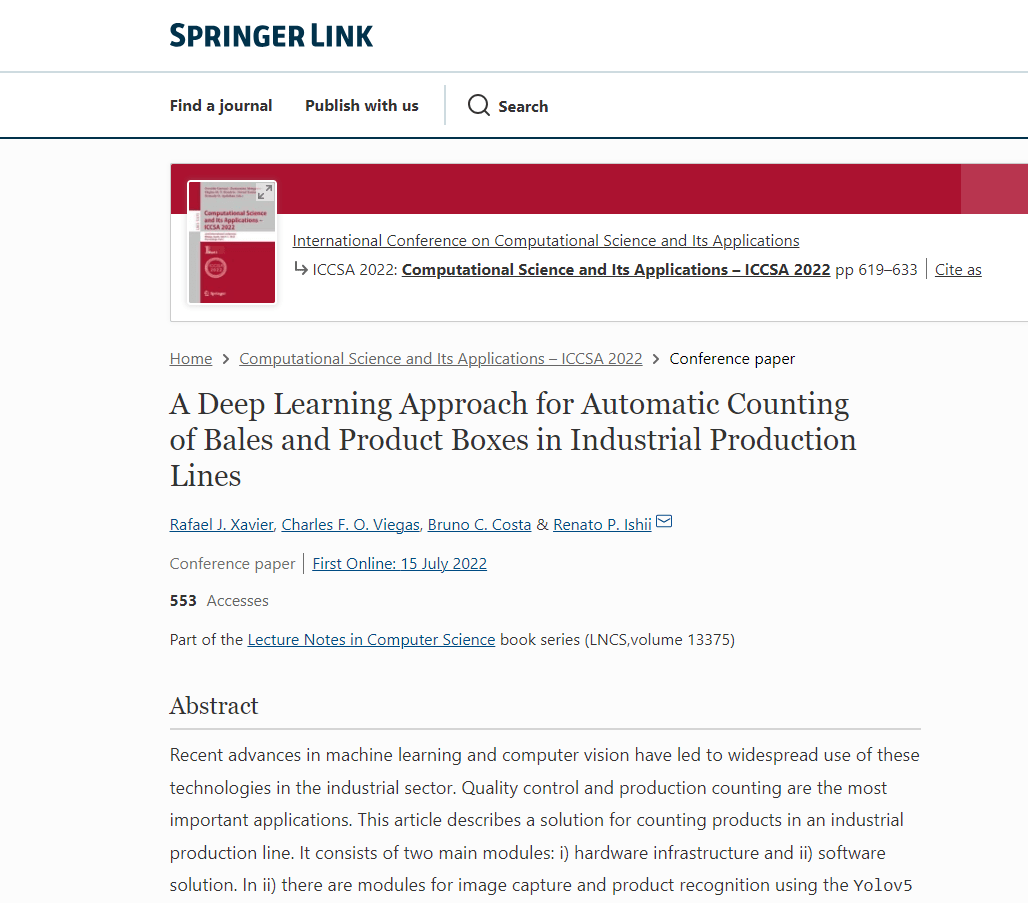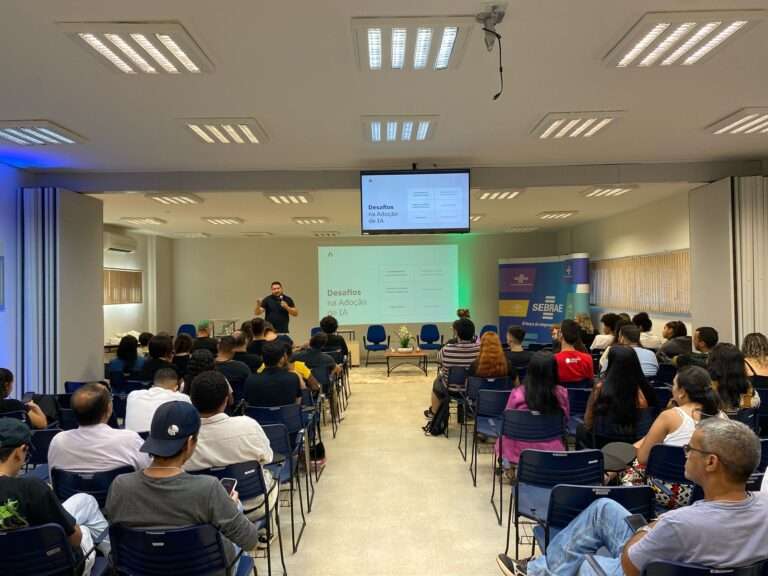Abstract
Recent advances in machine learning and computer vision have led to widespread use of these technologies in the industrial sector. Quality control and production counting are the most important applications. This article describes a solution for counting products in an industrial production line. It consists of two main modules: i) hardware infrastructure and ii) software solution. In ii) there are modules for image capture and product recognition using the Yolov5 algorithm and modules for tracking and counting products. The results show that our solution achieves 99.91% 99.91% accuracy in product counting and classification. Furthermore, these results were compared to the current manual counting system used in the industry considered in this study. This demonstrated the feasibility of our solution in a real production environment.
Keywords
Detection, Classification, Tracking, Counting, Machine learning, Deep learning e Industry 4.0
Notes
References
Bahaghighat, M., Akbari, L., Xin, Q.: A machine learning-based approach for counting blister cards within drug packages. IEEE Access 7, 83785–83796 (2019). https://doi.org/10.1109/ACCESS.2019.2924445
Bewley, A., Ge, Z., Ott, L., Ramos, F., Upcroft, B.: Simple online and realtime tracking. In: 2016 IEEE International Conference on Image Processing (ICIP), pp. 3464–3468 (2016). https://doi.org/10.1109/ICIP.2016.7533003
Deac, C., Popa, C.L., Ghinea, M., Cotet, C.: Machine vision in manufacturing processes and the digital twin of manufacturing architectures, pp. 0733–0736 (2017). https://doi.org/10.2507/28th.daaam.proceedings.103
Frank, A.G., Dalenogare, L.S., Ayala, N.F.: Industry 4.0 technologies: implementation patterns in manufacturing companies. Int. J. Prod. Econ. 210, 15–26 (2019). https://doi.org/10.1016/j.ijpe.2019.01.004, http://www.sciencedirect.com/science/article/pii/S0925527319300040
Jocher, G., et al.: ultralytics/yolov5: v5.0 – YOLOv5-P6 1280 models, AWS, Supervise.ly and YouTube integrations (2021). https://doi.org/10.5281/zenodo.4679653
Lee, S., Yang, C.: A real time object recognition and counting system for smart industrial camera sensor. IEEE Sens. J. 17(8), 2516–2523 (2017)
Lin, T.Y., Goyal, P., Girshick, R., He, K., Dollar, P.: Focal loss for dense object detection. In: Proceedings of the IEEE International Conference on Computer Vision (ICCV) (2017)
Rahimzadeh, M., Attar, A.: Introduction of a new dataset and method for detecting and counting the pistachios based on deep learning (2020)
Redmon, J., Divvala, S., Girshick, R., Farhadi, A.: You only look once: unified, real-time object detection (2015)
Redmon, J., Farhadi, A.: Yolo9000: better, faster, stronger (2016)
Redmon, J., Farhadi, A.: Yolov3: an incremental improvement (2018)
Shrestha, A., Mahmood, A.: Review of deep learning algorithms and architectures. IEEE Access 7, 53040–53065 (2019)
Ulaszewski, M., Janowski, R., Janowski, A.: Application of computer vision to egg detection on a production line in real time. Electron. Lett. Comput. Vision Image Anal. 20, 113–143 (2021). https://doi.org/10.5565/rev/elcvia.1390
Wang, S., Wan, J., Zhang, D., Li, D., Zhang, C.: Towards smart factory for industry 4.0: a self-organized multi-agent system with big data based feedback and coordination. Comput. Netw. 101, 158–168 (2016). https://doi.org/10.1016/j.comnet.2015.12.017, http://www.sciencedirect.com/science/article/pii/S1389128615005046
Acknowledgments
This paper was only possible thanks to the help of the Semalo Indústria e Comércio de Alimentos and its workers. We thank the support of the UFMS (Universidade Federal de Mato Grosso do Sul), PET (Programa de Educação Tutorial – FNDE), FUNDECT, Finep, and Ministério da Ciência, Tecnologia, Inovações e Comunicações, funded by FNDCT. We also thank the support of the INCT of the Future Internet for Smart Cities funded by CNPq, proc. 465446/2014-0, Coordenação de Aperfeiçoamento de Pessoal de Nível Superior – Brasil (CAPES) – Finance Code 001, and FAPESP, proc. 2014/50937-1 and 2015/24485-9.
Any opinions, findings, and conclusions or recommendations expressed in this material are those of the authors and do not necessarily reflect the views of FUNDECT, Finep, FAPESP, CAPES and CNPq.
Author information
Authors and Affiliations
See Working, Goias, 405, 79020-100, Campo Grande, MS, Brazil
Rafael J. Xavier, Charles F. O. Viegas & Bruno C. Costa
Federal University of Mato Grosso do Sul, Campo Grande, MS, Brazil
Renato P. Ishii
Corresponding author
Correspondence to Renato P. Ishii .
Editor information
Editors and Affiliations
University of Perugia, Perugia, Italy
Prof. Dr. Osvaldo Gervasi
University of Basilicata, Potenza, Potenza, Italy
Beniamino Murgante
Universidad de Málaga, Malaga, Spain
Eligius M. T. Hendrix
Monash University, Clayton, VIC, Australia
David Taniar
Kyushu Sangyo University, Fukuoka, Japan
Prof. Bernady O. Apduhan
Fonte: https://link.springer.com/chapter/10.1007/978-3-031-10522-7_42






